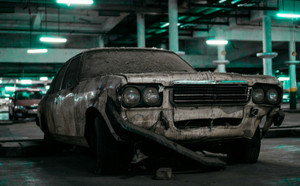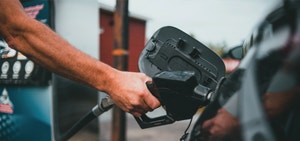How Long Can a Car Sit Unused?
By Kijiji Autos
Credit: Prateek Katyal via Unsplash
How long can a car be left without starting it? Well, that depends on the vehicle type, potential issues that may arise, and the precautions taken before letting it sit idle. This article aims to shed light on the general concerns of allowing cars to remain dormant and offers ways to prevent significant damage. Keep reading to explore everything you need to know about unused cars.
How long can a car sit unused?
The typical duration a vehicle can remain idle without starting is around two weeks. This span becomes even shorter in extremely cold weather, which is frequent in Canada. Moreover, if there are worries about the battery's condition, starting the vehicle more frequently is advisable.
A common question among drivers is: can a car go bad from sitting? The truth of the matter is many cars fail to recover after spending too much time idle. Cars are designed to be in motion, involving numerous working parts that require regular maintenance. You're likely to encounter various problems if a car sits too long, which can be attributed to the battery, tires, fluids, or interior.
How long can a hybrid car sit unused? Despite the advantage of larger batteries many of the same concerns persist. Let's examine five of the most common problems found in vehicles that have been stationary for extended periods.
5 common issues to expect when leaving a car unused
1. The battery will die
The primary concern with stationary vehicles is the battery. Car batteries are known to drain even over a single night, and the longer they sit, the more they continue to drain.
How long can a car battery sit unused? It's advisable not to let a car sit without starting it for more than two weeks. How long can a new car battery sit unused? Even new batteries will drain, as they're recharged when the vehicle is driven.
How long can a car battery sit unused in winter? Cold weather can cause a battery to drain faster, so be sure to start the vehicle more often in the winter months.
2. Tires will go flat
Car tires bear the substantial weight of an entire vehicle, inevitably experiencing air loss over time due to this pressure. Regularly maintaining the air pressure is necessary whether the car is in motion or not. However, prolonged stationary periods pose additional concerns. Tires tend to develop flat spots—hard, misshapen areas in the rubber. These patches not only affect driving comfort but can significantly impact the vehicle's handling, potentially leading to accidents.
3. Fluids can spoil
Just as your vehicle's moving parts need activity, so do the various fluids crucial for your car's performance. When left unused and unable to fulfill their purpose, these fluids can become stale and lose efficiency.
Engine oil, responsible for lubricating the engine and ensuring smooth operation, degrades over time without regular use.
The same holds true for antifreeze, vital for safeguarding components during weather variations.
Of utmost concern is brake fluid. This fluid is critical for aiding brake pads in stopping your vehicle, and stagnant or old brake fluid can lead to significant driving issues.
4. Fuel degrades over time
Similar to other fluids, fuel has a specific shelf life. Contrary to what movies depict, gasoline typically deteriorates after about three to six months, dispelling the notion of cars running smoothly post-apocalypse. Diesel fuel tends to last longer, with a shelf life of up to a year. However, stagnant fuel in your vehicle can lead to sudden shutdowns or difficulties in starting it—that said, leaving a vehicle completely empty of fuel isn't advisable either, as it can cause moisture buildup, resulting in irreversible corrosion inside the fuel tank.
5. Pest infestation
Lastly, the condition of your vehicle can become a concern when it's idle. Without regular washing, idle vehicles are prone to rust. Similarly, the interior requires attention to prevent unwelcome guests. Insects, spiders, rats or larger rodents may seek shelter in a stationary vehicle. This becomes especially worrisome if any trash is left inside, as these pests might start damaging the car, including its carpeting, upholstery and wiring, through chewing.
A guide to preparing your car for extended periods of non-use
Fortunately, there are steps you can take to prevent significant damage to your car if it needs to sit for an extended period. By following the steps below, you can help ensure the vehicle remains in top shape until you're ready to drive it again. With proper preparation, a vehicle can sit for months, or even years, without needing to be started.
Step 1: Park your car in a clean and dry area
Leaving a vehicle outside exposes it to nature's elements. Animals aren't the only concern; moisture and other factors can also adversely affect your car's paint and interior. Ideally, a vehicle should be stored in a garage, preferably a heated one maintaining a consistent temperature year-round. If a garage isn't available, consider covering the car with a waterproof cover or tarp.
Step 2: Preserve the battery
The battery will be the first thing to deteriorate on a car that remains stagnant for too long. Fortunately, there's a way to preserve the battery until your next drive. A battery maintainer, also referred to as a trickle charger, can be connected to the battery. This device provides a low, consistent charge to the battery, helping to keep it alive and extend its lifespan.
Step 3: Preserve the tires
There are a few options to help alleviate the burdensome load on your tires and extend their lifespan. First, ensure that each tire is filled to the recommended pressure. An under-inflated tire is more susceptible to developing flat spots. Tires are also vulnerable to weather conditions, so shield them from extremely cold winter months, direct sunlight, or excessive heat to prevent premature wear—keeping them covered is essential. Additionally, you can elevate the vehicle off the tires using blocks or jacks. This allows the tires to be removed and preserved elsewhere. If that's not feasible, consider using race ramps designed to cradle the tires' natural shape and help preserve them.
Step 4: Preserve the gas tank
While gas does degrade after a certain amount of time, it's also essential not to leave a stagnant car with an empty tank. The moisture without a substantial amount of liquid fuel can cause significant damage to the inside of the fuel tank. Assure that the car has at least a quarter-full tank of gas before leaving it for an extended period. Additionally, if you plan on leaving the vehicle alone for longer than a month, there are fuel stabilizers designed to preserve the quality of the petrol. While they are not a permanent fix, fuel stabilizers can help keep gas fresh for as long as 12 months.
Step 5: Clean and preserve the vehicle
Cleaning the vehicle, both internally and externally, plays a crucial role in preserving it during extended periods of inactivity. Allowing moisture, stains, bird droppings or tree sap to linger on the vehicle's exterior can lead to rust over time. To safeguard the exterior, consider applying an additional layer of protection, such as wax, to maintain its optimal condition. At the same time, ensure the interior is devoid of any garbage or potential food sources that might attract unwanted pests. A thorough vacuuming will not only clean the interior but also eliminate smaller insects. For an added layer of protection, consider a pest deterrent such as mothballs, peppermint oil or steel wool. Each of these helps to keep a different pest at bay.
Step 6: Do not leave the parking brake on
Finally, ensure that you don’t leave the parking brake engaged when leaving the car for extended periods. While the extra braking might offer temporary assistance, keeping it on for a long time poses a significant risk: rust. If the parking brake rusts while in contact with the rotors, there's a potential for them to fuse. Such a scenario could lead to severe damage to the vehicle, rendering it immobile. Therefore, it's advisable to leave the parking brake off.
Looking for a new or used vehicle? Be sure to check out the extensive catalogue of cars available on Kijiji Autos.
Easily find your next ride on Kijiji Autos
Search nowCosts of Installing an Electric Car (EV) Charging Station in Canada
Installing a home EV charger can come with additional fees beyond purchase and installation. Here's a list of factors that can affect the price of a home EV charger.Toronto to Calgary Road Trip: Routes & Tips
Planning on driving from Toronto to Calgary? Here are some routes and tips to help you along the way.Flat Tire vs Blowout: What's the Difference & What Should You Do?
The main difference between a flat tire and a blowout is that a blowout often feels like an explosion has occurred underneath your vehicle. Blowouts can cause sudden and drastic changes to the handling of your vehicle and can lead to minor or even serious accidents.7 items you can fit in an SUV: TVs, mattresses and more
Discover seven common items that fit in an SUV below.Tips to help protect your vehicle and budget for car repairs
When shopping for your next vehicle, it's always a good idea to keep hidden costs in mind. Before you buy, let's look at how much it can cost to maintain a car in Canada, how much you could budget for annual maintenance and repairs, and how to help protect your car against damage and depreciationThe top three best paint protection options for your vehicle
Buying a new vehicle is a great experience. Nothing beats hitting the road in a car you bought fresh off the lot. However, as fun as it is to finally get behind the wheel of your new ride, it's important to take your time through the process.What is the value of undercoat protection on your vehicle?
When you buy a new vehicle, protecting it so that it lasts as long as possible is definitely top of mind, whether that's through security upgrades or an extra coat of paint. But how often do you consider the care and safety of your vehicle’s undercarriage?Financial guide: post-pandemic car shopping and gas price hacks
With populations locked down and international borders closed the global supply chain has been disrupted on a massive scale, pushing up inflation around the world and raising the cost of everything that people need to get back to normal. Here are a few tips you can use to grab the vehicle you want without breaking the bank.10 tips to help make the road a better and happier place
We have all, at some point, been responsible for making the roadways stressful in one way or another. Alternatively, we are all equally capable of making the road a happier place. Let’s explore 10 unique ways we can help make the driving experience better again, for everyone's sake.10 eco-driving tips that can help you save money and reduce your carbon footprint
With rising gas prices, carbon taxes on fuel and concerns about climate change, many Canadians are wondering how to save gas when driving. Experts recommend adopting eco-driving techniques that can help you save money and fuel. Read on to discover 10 of them:








